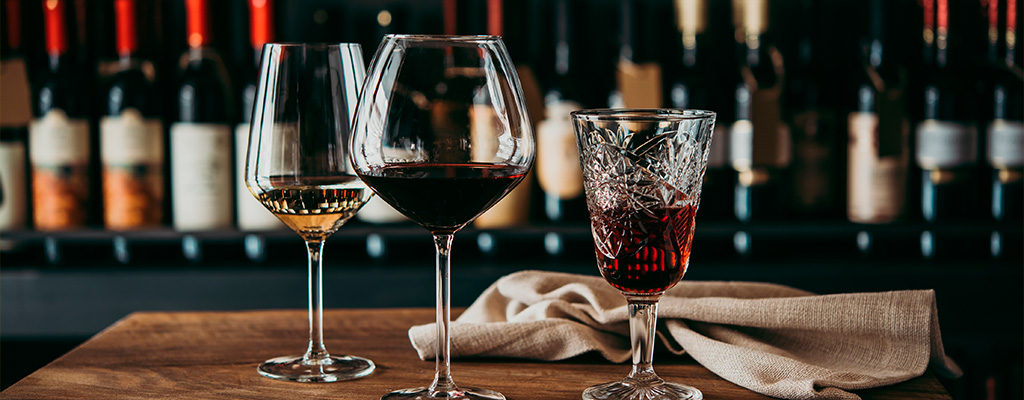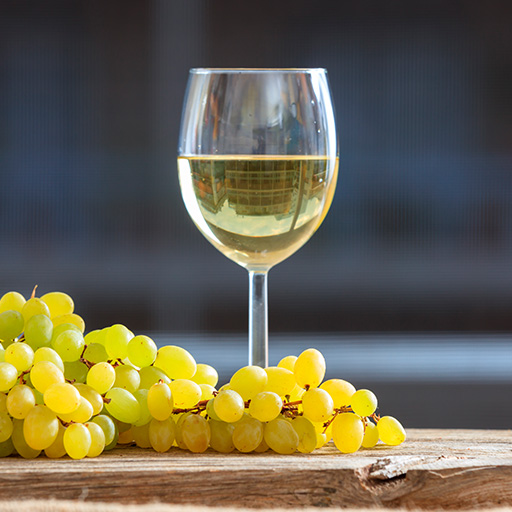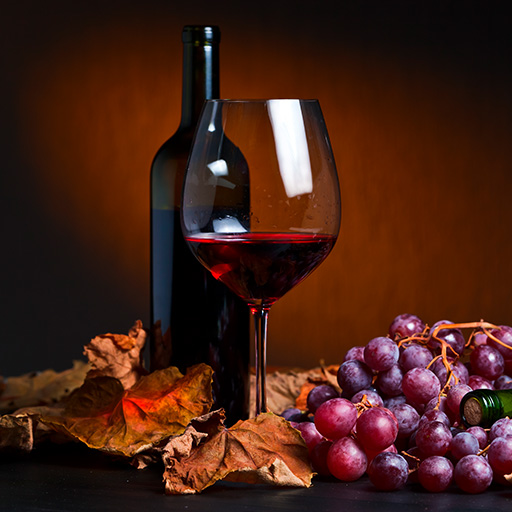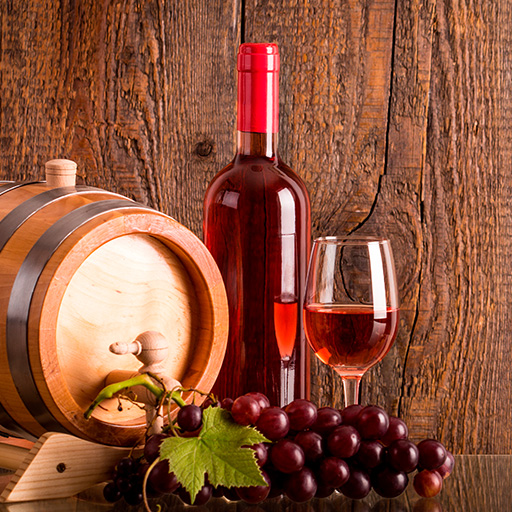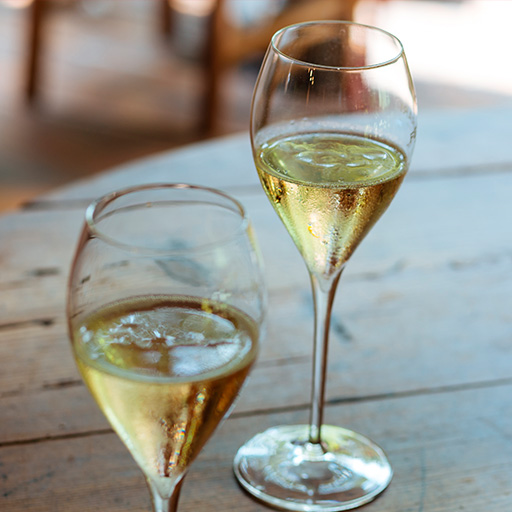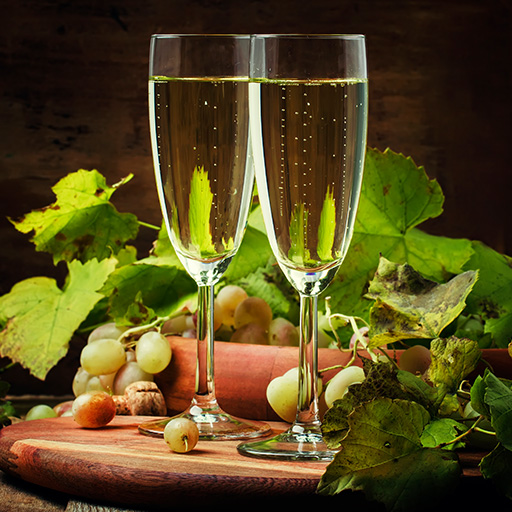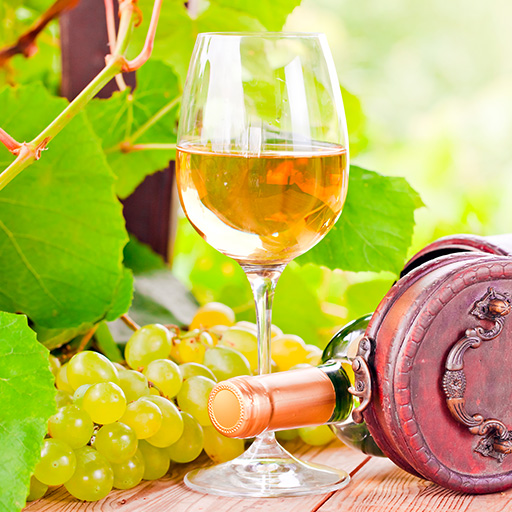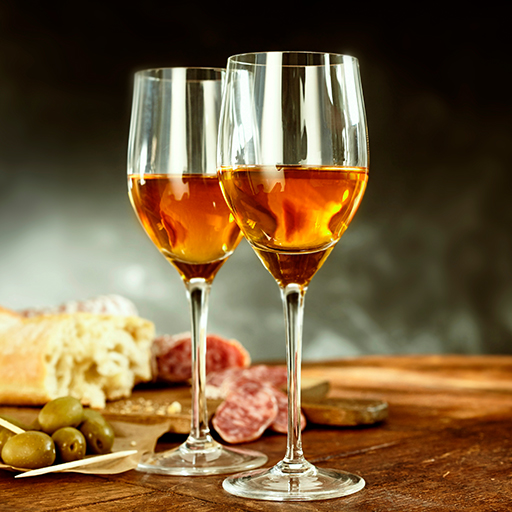White wine
Almost exclusively, light grapes are used to produce white wine. White wine is one of the most popular types of wine worldwide and accounts for almost half of all wines produced around the globe. Mostly, this wine is drunk young and is characterised by fresh, fruity aromas with a relatively high acidity. Well-known grape varieties are Riesling, Sauvignon Blanc or Pinot Blanc, for example.
